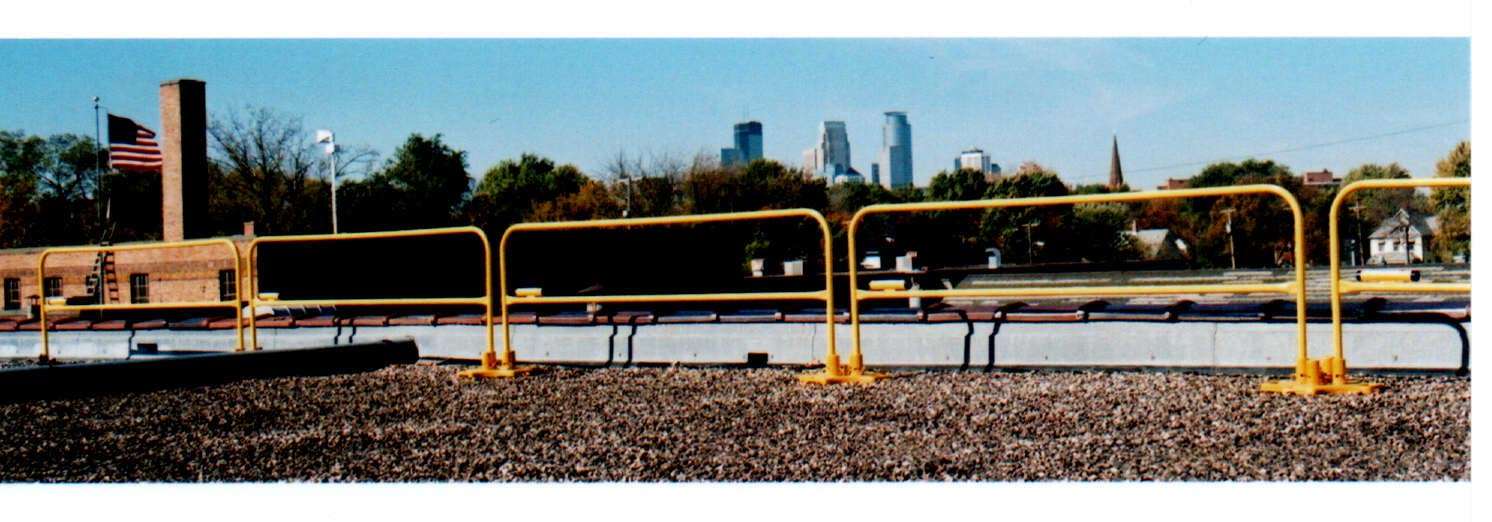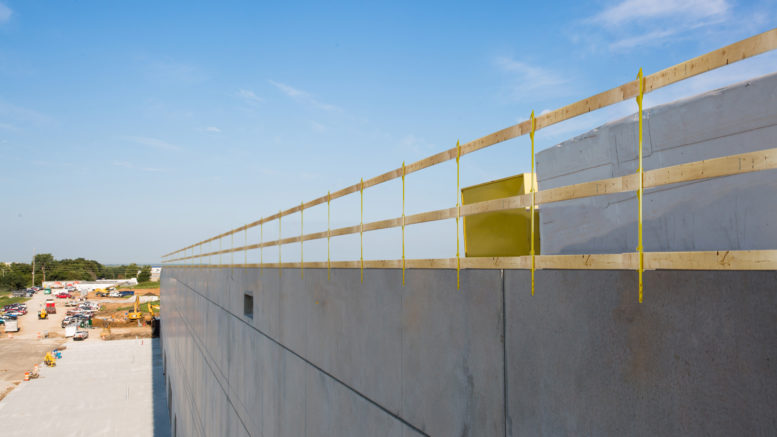
Keep in mind that even temporary work situations such as scaffolds should be addressed.

28 includes information that employers need to ensure that a fall protection plan is incorporated when employees are exposed to a fall of 4 feet or more to a lower level. Mid rails (and each intermediate member) are to withstand a force of at least 150 pounds applied in any downward or outward direction.Īlso, OSHA standard. They are to withstand a force of at least 200 pounds applied in a downward or outward direction within 2 inches of the top edge at any point along the top rail. This fall protection requirement deals with the strength of the railing.

(This is where the measurement of an equivalent intermediate member comes into play.) Openings are no more than 19 inches wide for other intermediate members (such as additional mid rails and architectural panels). The distance between intermediate vertical members (such as balusters) is no more than 19 inches.
#Osha guard rails install#
Install the mid rail halfway between the top rail and the walking surface. If the vertical opening in the rail is more than 19 inches, then there must be a mid rail / intermediate rail. This is the first OSHA requirement to be aware of.
#Osha guard rails plus#
To meet OSHA’s guardrail height requirements, the top rail needs to be 42 inches plus or minus 3 inches above the walking-working surface. 29: OSHA Guardrail Requirements: Height and Strength Further, complying with OSHA’s safety railing and requirements can reduce falls and citations.Īre you curious about OSHA handrail requirements or what OSHA railing height is appropriate for your facility? First of all, here are some applicable requirements for guardrails and safety railings included in OSHA’s Walking-Working Surfaces standard for general industry to help prevent fall hazard. Including guardrails and safety rail systems is an important consideration in fall prevention systems. Fall protection guardrails are a system of railings to prevent workers from falling off a landing, platform, or walkway.Ĭommon applications include standing seam or metal roof fall protection installations and the popular Accufit system for flat roof railings. A roof handrail can also provide a physical barrier and help prevent falls from the edge, and is an important measure to be taken along with standard roof hatch guardrails.Ī safety handrail helps to provide stability for a handhold whether on a walkway, steps, or platform. Technicians need to access these structures from an elevated position and may need safety railings. Many rooftops include elevated pipes, ducts, HVAC equipment. There are many places in a facility or on a rooftop that pose a hazard for workplace injuries and fatalities. This is especially true when differences arise in Cal-OSHA guardrail regulations.

Although the updated standards have been in place, many employers remain confused or have questions about the changes required of their fall protection and guard rail system.Īreas of confusion often arise with fall protection railing requirements, OSHA guardrail height, handrail requirements, and safety railings / temporary guardrails. Organizations continue to work toward understanding and implementing the required changes and complying with OSHA regulations.

These updates became effective in January 2017 and many of them align general industry regulations for OSHA guardrail height, ladders, and stairways with construction standards. The Occupational Safety and Health Administration (OSHA) provided new fall protection standards back in Fall of 2016.


 0 kommentar(er)
0 kommentar(er)
